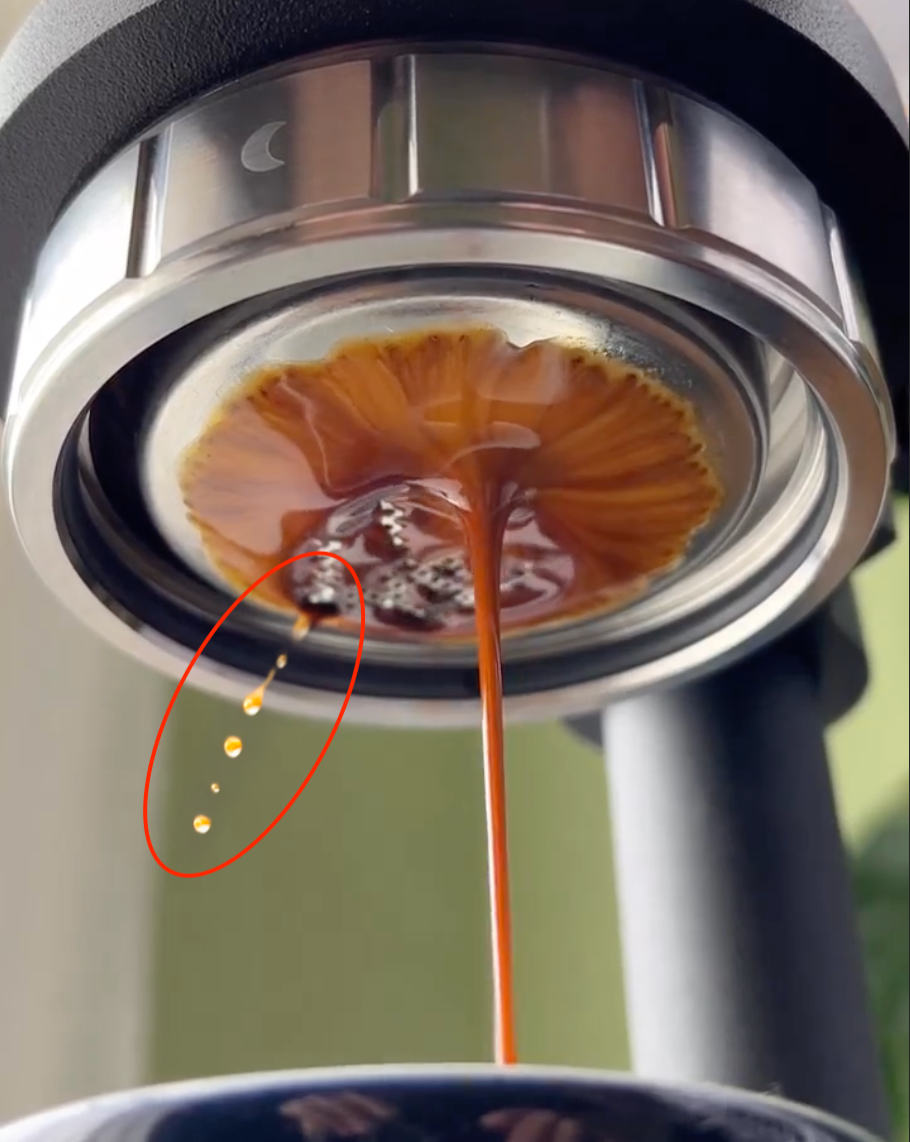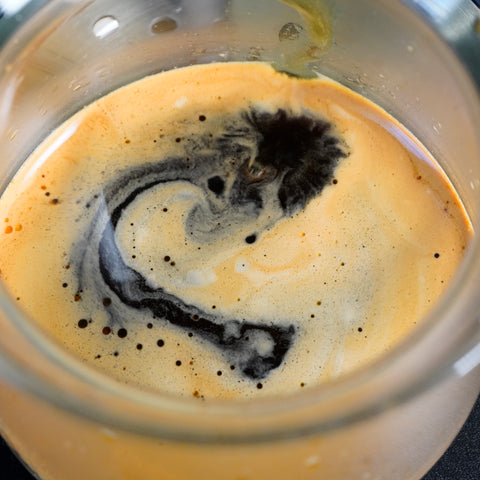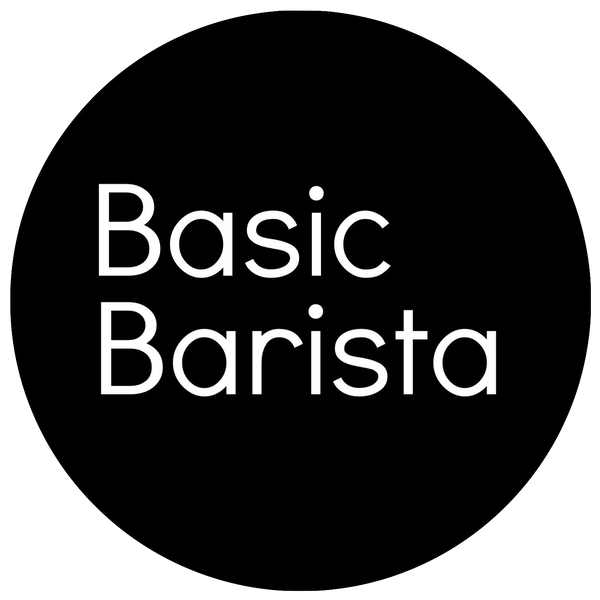
What Is Channeling In Coffee? How To Improve Your Espresso
Share this article
Channelling in espresso is a common issue that can significantly impact the quality of your shot. It occurs when water finds a narrow path through the coffee puck, leading to uneven extraction. This results in a shot with muddied flavours, often tasting weak, sour, or bitter. In this article we first address what channeling actually is and then move on to some common techniques and tools used to mitigate channeling in espresso.
What is Channelling?
Channelling happens when there are weak spots in your coffee bed, allowing water to pass through too quickly, inhibiting an even flow. This uneven flow causes some areas of the coffee to be over extracted while others remain under extracted. The result? A shot that lacks balance, with unpleasant flavours and an inconsistent crema.

How to Detect Channelling
A bottomless or naked portafilter is one of the best tools for diagnosing channelling, paired with a shot mirror you can easily see the little spirts of coffee. Signs of channelling include:
- Uneven initial drops during extraction
- Espresso flowing from only one side of the basket
- Tiny jets of water shooting out from the puck
- A noticeably thin or broken crema layer
- Holes appearing on your coffee puck after extraction.
If you notice any of these signs, this article is for you and it's likely that your puck preparation needs some improvements.

What Causes Espresso to Channel?
Several factors can contribute to channelling in espresso, but the most common causes include:
1. Grinding Too Fine
A very fine grind can create overly compacted areas in the coffee puck, leading to high resistance and uneven water flow during espresso extraction. While fine grinds are essential for espresso, there needs to be a balance. If the grind is too fine, it can cause over extraction in some areas while completely bypassing others.
2. Poor Coffee Distribution
Uneven distribution of coffee grounds creates weak spots in the puck, allowing water to flow through these areas more easily. This is why proper puck preparation is crucial. Using a distribution tool or the Weiss Distribution Technique (WDT) can help break up clumps and create an even coffee bed.
3. Uneven Tamping
Tamping should be firm and level. If one side of the puck is compressed more than the other, water will favour the looser areas, creating a faster flow rate and leading to under-extraction. A level and consistent tamp ensures even water distribution and reduces the chances of channelling.
How Channelling Affects Espresso Extraction
When water flows unevenly through the coffee puck, the coffee grounds don’t extract uniformly. This can lead to:
- Over Extraction: Bitter, dry, or astringent flavours occur in areas where the water has slowed down and extracted too much from the coffee.
- Under Extraction: Sour, weak, or acidic flavours appear where water has rushed through too quickly, failing to extract enough soluble compounds.
- Inconsistent Body & Crema: A properly extracted espresso should have a rich, syrupy texture and a consistent crema. Channelling disrupts this balance, leading to a shot that appears thin and lacks depth.
If you're experiencing similar issues in your espresso but aren't seeing any signs of channeling in the puck or in the shot itself you may want to also check that you aren't using old beans. Stale coffee beans can result in a weak crema, fast flowing shots of espresso and the lack of flavour can often be confused with a muddied unbalanced shot of espresso. Depending on how you store your coffee beans you can increase or slow the rate of ageing.

Preventing Channelling in Espresso
If you've read up to hear then you know that channelling sucks, it's often tricky to avoid and sometimes depending on your technique or equipment can feel impossible to completly stop.
Minimise channelling in your coffee with these 3 tips:
1. Use Proper Distribution Techniques
- Use a WDT tool to break up boulders before tamping.
- Gently tap the portafilter to settle the grounds evenly and remove air pockets.
- Consider using a coffee distribution tool to level the surface before tamping.
2. Ensure Consistent Tamping
- Apply firm and even pressure when tamping.
- Use a level tamper to prevent an uneven surface.
- Avoid twisting or applying excessive force while tamping, which can compact the puck unevenly.
- Line up your coffee tamper with the portafilter using your thumb, this helps ensure a flat tamp across the sides of your puck.
3. Adjust Your Grind Size
- Experiment with different coffee grind sizes to find a balance between flow rate and resistance.
- If espresso extracts too fast, try a finer grind size.
- If espresso take too long, adjust slightly coarser.
Different Distribution techniques:
We've all seen the triggering TikTok videos of some Italian barista grinding coffee way to fine, scooping it into the basket with a spoon and skipping the tamping altogether to then pull a 2 minute shot of eXpresso. I'm not hating but if you want to make espresso that ACTUALLY tastes good then here's how I go about distributing coffee and some techniques I use.
1. The Finger Distribution Technique
If you've worked in a cafe before 2020 chances are you didn't have all the fancy coffee distribution tools we now have access to, maybe you had an OCD but most relied on the finger technique.
Simply fill your portafilter up with ground coffee until you have a mound that sits way above the basket, using your index finger push and pull the mound of coffee grounds to fill and flatten the basket evenly before swiping the remainder off back into the hopper.
As you can imagine this technique is super inaccurate, distributes only the top portion of the coffee puck and because you aren't weighing your dose of coffee you are unable to fix problems or repeat this again. This results in inconsistent shots of coffee throughout service.
2. The Second Finger Distribution Technique
Baristas evolved and decided to up their game by creating another technique using their fingers. This time you weighed out the correct amount of coffee grounds into your portafilter and used the inner side of your index finger to go around the basket back and forth until the coffee is flat and level before tamping.
This technique is better than the first finger distribution technique we discussed because you weighed out your coffee grounds but again by using your finger to push and pull the coffee grounds this is going to vary between barista and will only distribute the coffee grounds at the top of the puck. The moment you tamp this you will end up with varying levels of density throughout your puck of coffee.
3. The Tapping Distribution Technique
Incorporating a couple of taps once your coffee grounds are inside the basket before using your finger maybe the missing step if using coffee distribution tools isn't an option.
By tapping your portafilter you're essentially moving the coffee grounds around and having the ground coffee fall into any air pockets prior to tamping, while this technique will lessen your chances of channeling it still doesn't effectively break up clumps or guarantee a perfect shot of espresso.
Different Distribution Tools
What I hope you've learnt with this is that using your fingers (regardless of your technique) is often the least accurate way to go about distributing coffee and will result in the highest chance of your coffee puck channeling. Which brings us to our next section, coffee distribution tools.
WDT Needle Tools
Using a WDT tool will penetrate the deepest parts of the puck and evenly break up clumps in your coffee. From my experience this is the best way to ensure your puck of coffee is as even as it can be. In my own experience I found that incorporating a combination of WDT and tapping the puck on a bench prior to tamping gives me the best results and 90% of the time my espresso doesn't channel.
Different Types Of WDT Tools
There are two main types of WDT tools you need to know about, the first type is a hand held needle stirrer, this is one of the original designs and prior to professional tools being manufactured home baristas would make their own using a wine cork and some acupuncture needles. The design itself has not strayed too far but it is common to find WDT stirrer tools with blunt needles around 0.5 - 0.8mm thickness and with metal or wood handles.

The needles need to be positioned and calibrated to the height of your basket which is easy to do, but also easy to forget about. As well as this using this tool quickly can take some time getting used to and is less intuitive compared to handheld WDT stirrers or distributors like the NCD.
OCD / NCD Coffee Distributor
The OG of coffee distributors, the OCD or later called the NCD Coffee Distributor is a disk shaped device with fins that protrude. Simply place it on top of your puck of coffee, spin it a couple of times before tamping and you're left with a polished puck of coffee that is so much flatter than what a finger can achieve.
Vibrational Distribution tools
New from Nucleus Coffee Tools is their vibrating NCD Pulse coffee distributor, this tools combines what can be achieved by WDT and the original NCD by using subtle vibrations to penetrate the entire puck of coffee and remove air pockets.
From our experience using the NCD Pulse we have found this tool to have the quickest workflow and provide the best results out of everything we have mentioned so far.
The trick to getting the best result with the NCD Pulse is to not over-vibrate the puck, this can lead to fines migration essentially distributing the coffee grounds so well that the smallest particles of coffee start to move toward the base of the puck and clog up the holes in your basket. When using the NCD Pulse you don't have to tap the portafilter, you can avoid using your barista finger technique and you wont need to use any WDT needle stirrers.
Simply place the NCD Pulse on top of your ground coffee, initiate the vibrations and spin it 2-3 times prior to tamping. This can all be done with one hand and is super fast.

Channelling is one of the biggest factors that can make or break an espresso shot. By identifying the causes and implementing better puck preparation techniques, you can achieve a more even extraction, aim for a balanced, flavourful espresso with rich syrupy crema. Next time you brew, pay close attention to your distribution, tamping, and grind size, watch your espresso extract, inspect the puck of coffee after pulling your espresso shot and you will be surprised at the improvement in taste of your espresso.
Espresso isn't easy, forcing hot pressurised water through a puck of finely ground coffee all happens very quickly and the smallest of variables can significantly impact your shot of espresso. By paying close attention to how your espresso extracts and tastes you can establish what you're doing wrong or implement techniques to improve your espresso.





